A simple quarter section of land contains a legacy of family memories and conservation.
Enlarge
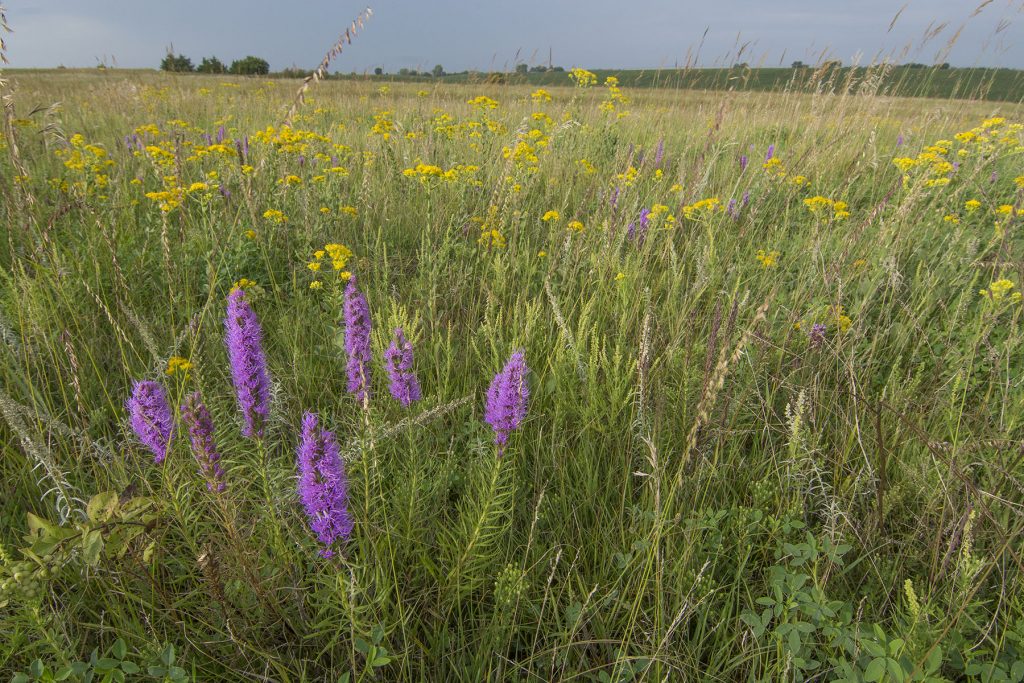
Story and photos by Chris Helzer, The Nature Conservancy
Back in 1960, my grandpa bought 160 acres of farm land near Stockham – a couple miles north of the farmstead where he and my grandma were raising my dad and his two sisters. Most of the parcel was in cultivation, except for several small draws (totaling about 26 acres) where isolated patches of native prairie persisted. According to family lore, much of the land was in pretty tough shape, with a lot of topsoil erosion from the hilly ground, and most of it probably shouldn’t ever have been farmed. Grandpa bought it because he needed grass for his cow herd and immediately enrolled it in the Soil Conservation Service’s Great Plains Conservation Program. Using that cost-share money, Grandpa reseeded all but 49 acres to grass and installed a dam for a livestock pond.
My grandma kept meticulous records, so we still have the 1962 receipts for grass seed, and I can tell you that the seed mix consisted of big bluestem, indiangrass, switchgrass, little bluestem, sideoats grama, western wheatgrass and a little blue grama. I even have a newspaper clipping about the project, including a photo of my grandpa standing in his newly established pasture. My dad used the northwestern corner of the land for a 4-H project, planting rows of redcedar, Russian olive and multiflora rose behind the dam, which he insisted was considered good wildlife habitat restoration at the time. Grandpa and Grandma retired from the farm in the 1980s, but the land remained in the family. After I finished college and started my job as a land manager for The Nature Conservancy, I began to help grandma manage the property. Dad came out a few times a year to cut little cedar trees out of the pasture (which seemed fair, since most were progeny of the trees he’d planted for his 4-H project), and I helped Grandma manage the pasture lease and annual grazing plans.
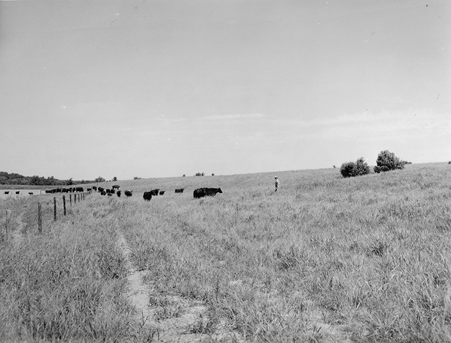
grassland in 1964. Photo by G. P. Remmenga, USDA-SOIL CONSERVATION SERVICE
I often reflect upon the legacy of Grandpa’s decision to buy that degraded piece of farmland and put it back to grass. Though I think he was motivated mostly by cheap land and a desire for pasture close to home, the purchase and restoration of that quarter section was an important conservation project. The grass planting reduced soil erosion and sediment inputs into the west fork of the Big Blue River, which is less than a mile downstream. It also turned 26 acres of isolated prairie fragments into more than 100 acres of contiguous prairie habitat. The plant and animal species that had been restricted to those tiny prairie fragments can now spread out and occupy much larger areas, giving them a much greater chance to survive and thrive.
Beyond the conservation impacts, the Helzer Family Prairie, as we’ve come to call it, has had a profound effect on my life and career, and has been the source of countless memories for everyone in my family. After both of my grandparents died, the land was owned by my dad and his two sisters. The three of them were strongly committed to keeping the property in the family, and they worked out a plan to allow me to buy the land from them over time, something I’m incredibly grateful for.
Ecology and Habitat Management
The Helzer Family Prairie sits in the transition zone between tallgrass and mixed-grass prairie. In a wet year, ungrazed portions of the prairie can produce big bluestem plants as tall as I am, but in most years, and under grazing pressure, the big bluestem and indiangrass heights are more reduced, and mid-height grasses such as sideoats grama, little bluestem and tall dropseed become more dominant. Invasive species, including smooth brome and Kentucky bluegrass, have both invaded the site, along with sweet clover, and all three can be very abundant under certain management and weather conditions. The small patches of unplowed prairie on the site contain wildflowers such as leadplant, prairie violet, dotted gayfeather, white-eyed grass, ground plum, purple prairie clover and many more. Since 1962, many of those wildflowers have moved out into the former cropland, joining the seeded grasses. Over the last 15 years or so, various members of my family have helped me collect wildflower seeds from other nearby prairies and broadcast them on recently-grazed portions of the site. Those efforts have helped speed up the diversification of the plant community.
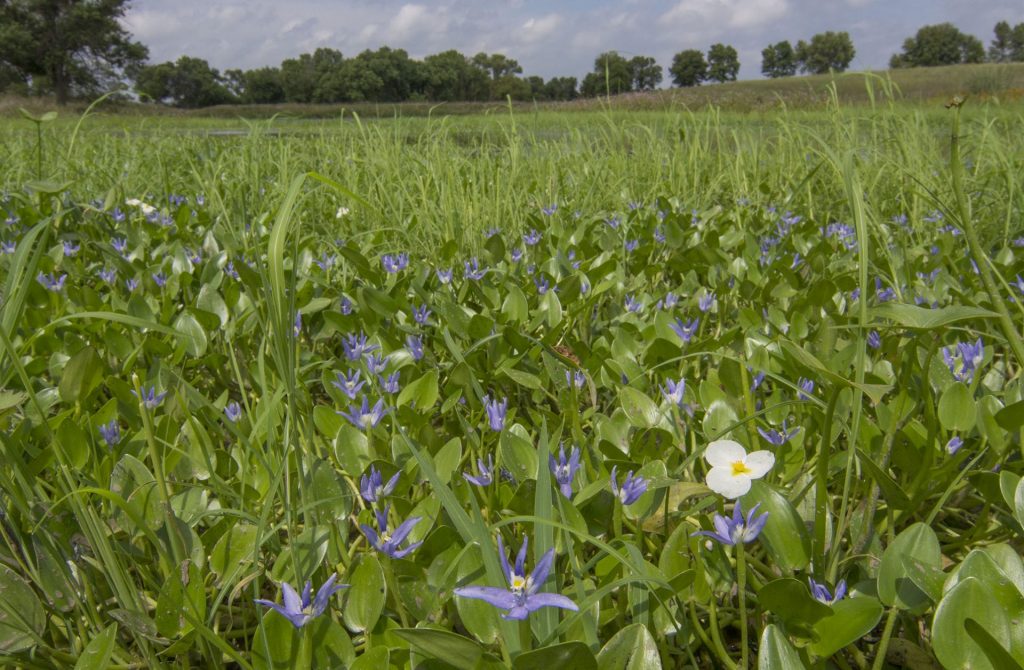
For a relatively small and isolated site, surrounded by miles of cropland, our prairie has a surprising profusion of wildlife. Breeding grassland birds include grasshopper sparrows, western meadowlarks and upland sandpipers, among others, and I even spotted a greater prairie chicken during June a few years ago, which makes me wonder if that species is a periodic nester. Ring-necked pheasants and northern bobwhites are both abundant, and now and then, a few wild turkeys make their way up from the wooded river valley to the north.
There are lots of frogs in the pond/wetland, including chorus frogs, leopard frogs and a recent invasion of bullfrogs. They are joined by myriad dragonflies, damselflies, and many other invertebrates, and we have frequent visits by various ducks, shorebirds and itinerant great blue herons. We even spotted a big snapping turtle making its way toward the pond years ago, though we don’t seem to have a stable population of any turtle species. Pollinators are abundant, including monarch and regal fritillary butterflies, along with several species of bumblebees and countless other bees, moths and flies. Judging by tracks in the snow and numerous burrows and mounds scattered about, our small mammal population is strong, and that helps support a resident family of coyotes, which are always a treat to see.
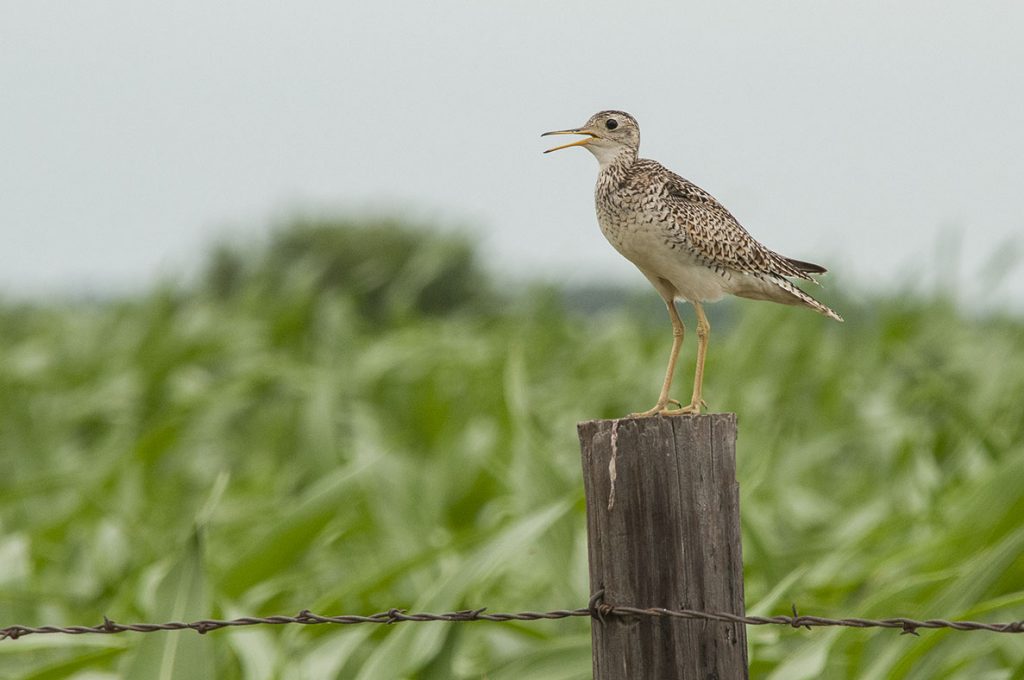
Because our prairie is miles away from any others, the chances of prairie plants or animals coming to our prairie from elsewhere are awfully slim. That essentially makes us managers of a prairie island in a sea of cropland, and we do our best to provide habitat for all plant and animal species because if we lose any, they probably won’t come back. Cattle grazing is our primary tool for managing habitat structure (see page 27 sidebar), as well as our primary source of income from the prairie. We try to provide areas of both tall and short vegetation each year, as well as “weedy” recovery patches, since those sites recovering from intensive grazing are where we see the highest concentrations of wildlife, pollinators and other insects. In any particular part of the prairie, the habitat structure changes from year to year. Those changing conditions help prevent predators or pathogens from building up and help to foster a diverse plant community.
Our grazing management improved a few years ago after working with Nebraska Game and Parks Commission and U.S. Fish and Wildlife Service private lands biologists. They provided cost-share funds to help us install two solar-powered livestock watering facilities and tweak the layout of our fences. The new water sources allowed us to exclude cattle from the pond, which led to a tremendous increase in the number of wetland plants and wildlife species in and around it. Instead of a shallow muddy pond that was always threatening to dry up and leave our cattle without water, we now have a lush and beautiful wetland, and we see more ducks and other wildlife than ever before. Changing to no-till farming on the crop fields adjacent to the prairie has also been significant; we see much less soil erosion from water running off those fields, and gullies forming in the loess soil have begun to heal.
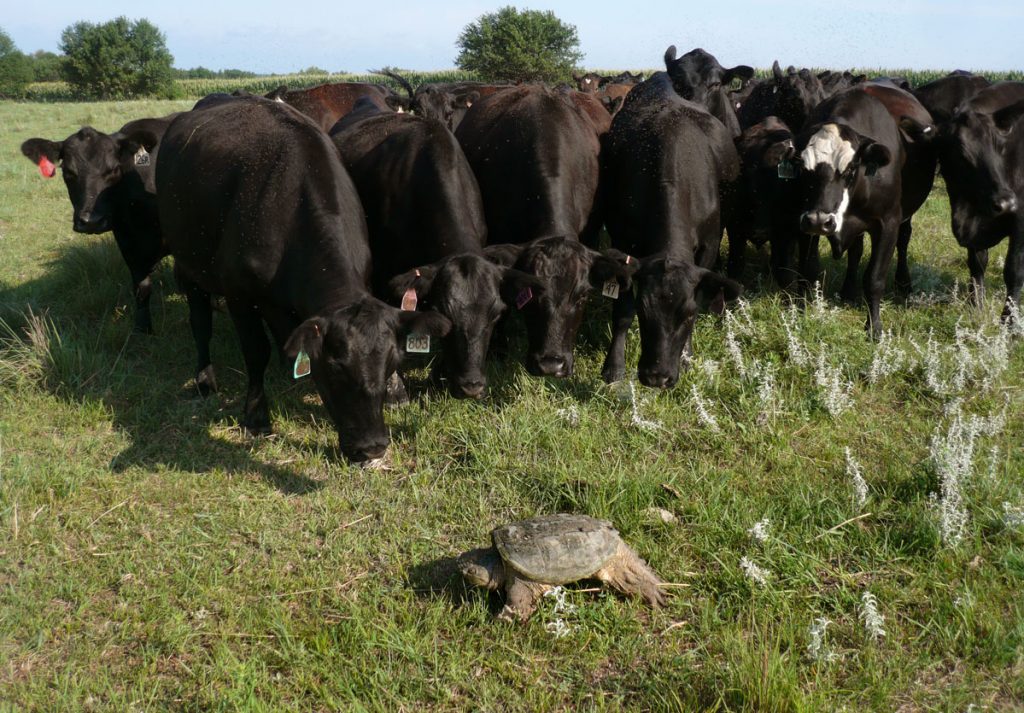
to make its way to the pond. Photo by Chris Helzer.
Years ago, we got rid of the trees Dad had planted for his “habitat” project, but we still spend hours each year cutting little cedars out of the prairie. In addition to eastern redcedar, other tree species are constantly trying to invade our prairie as well, with honey locust leading that charge. Those deciduous trees take extra work because we have to paint the stumps with herbicide to keep them from re-sprouting after we cut them.
Apart from trees, we have other several invaders that keep us busy. We regularly spot spray reed canarygrass plants along the wetland edge to keep them from taking over, and keep a sharp eye out for narrowleaf cattails and other invasive aquatic plants so we can stop them before they become established. Brome, bluegrass and sweet clover are so entrenched in the prairie that we just use grazing management to keep them from becoming oppressive enough to stifle overall plant diversity.
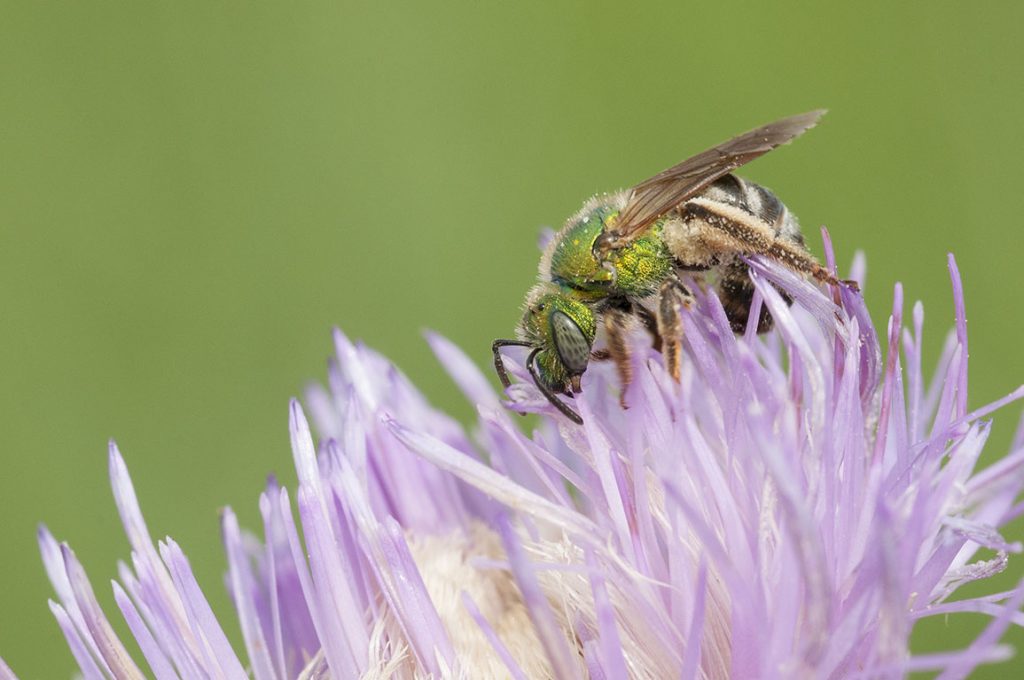
Like most other pastures in the state, ours has a few musk thistles to chop each year, though usually only a few dozen or so. We’ve had to carefully train our kids and lessees to chop only the musk thistles, leaving behind the native wavy-leaf, Flodman’s and tall thistles. Those native thistles are among the best providers of pollinator habitat and wildlife food (seeds) in our prairie, and it’s rare to see a thistle flower without seeing bees, butterflies, or other insects feeding on it.
We’re also appreciative of many other plants others might call weeds, including ragweed, gumweed, snow-on-the-mountain and hoary vervain. All of them respond strongly to grazing pressure, flourishing in the aftermath of a season of intensive grazing, but fade quickly in subsequent years, as that part of the prairie is rested and recovers. When abundant, those tall weedy plants, surrounded by short-cropped grass, provide fantastic brood-rearing habitat for quail, pheasants and upland sandpipers, as well as food and habitat for many other species of wildlife, pollinators and other insects.
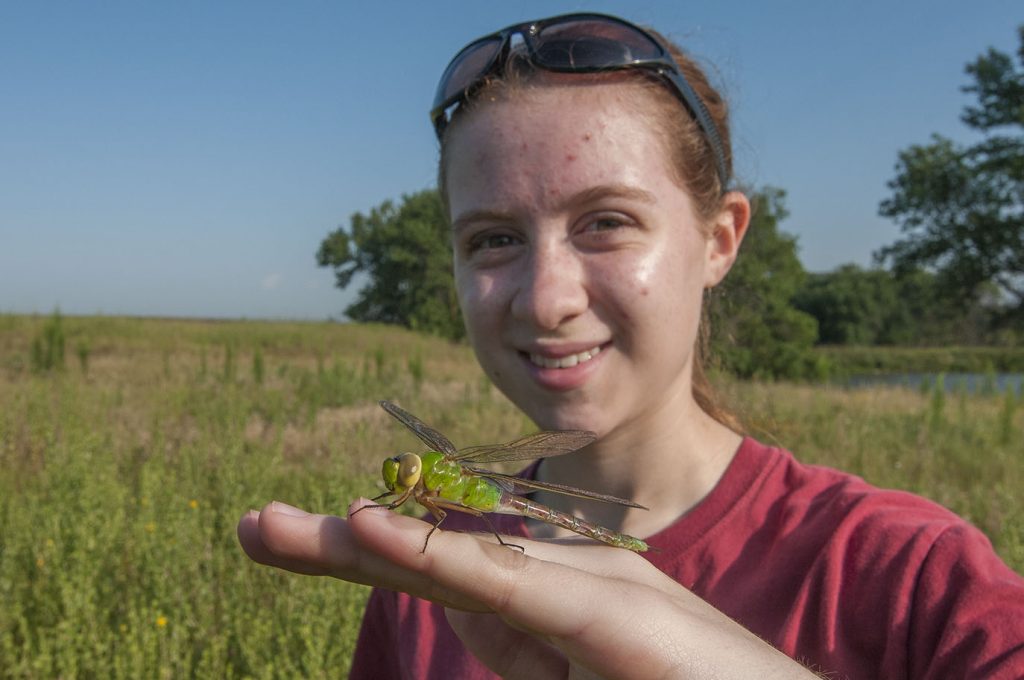
Recreation and Family
While we do our best to improve the conservation value of our prairie, the site is most important to us as a family retreat and recreational area. It’s only a 15-minute drive from our house, so it’s easy to head out for just a few hours at a time. The kids and dogs love to explore the wetland area, either by wading or with the canoe we store on site. Fishing is no longer an option after the last bullheads disappeared when the wetland dried up completely a few years back, but there are plenty of frogs and other critters to chase and watch. In addition, we rarely visit the prairie without making a small campfire and cooking hot dogs on sticks.
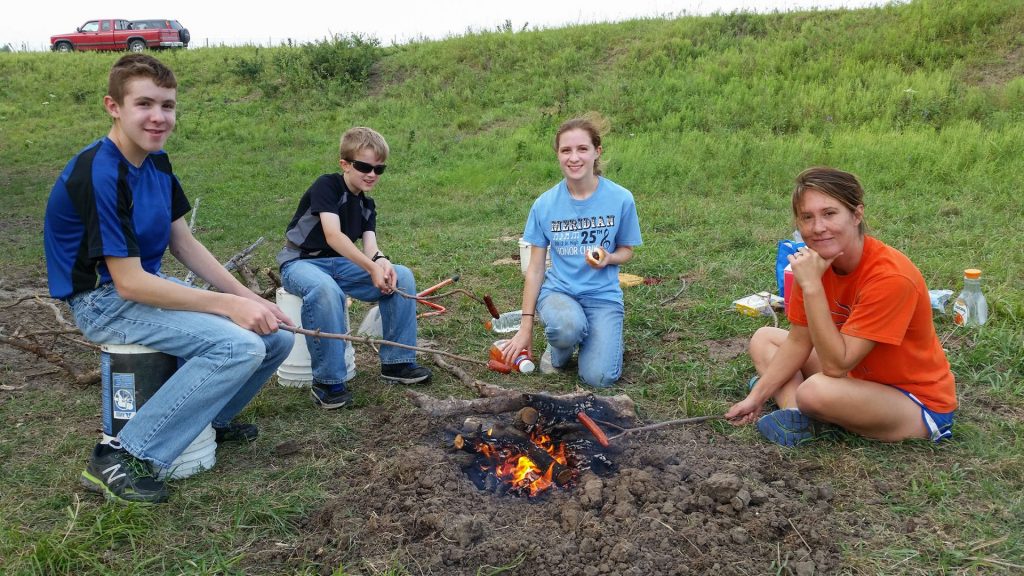
When I cut down some good-sized trees several years ago, we stacked the branches strategically, leaving hollow areas in the middle of each pile, and the kids used those piles as forts and hideouts. They also climb the few remaining trees on site, chase each other around with sticks, and even let their parents show them interesting flowers or tracks now and then. We’ve gone ice skating, sledding, hunting, camping and insect netting countless times over the years, and as my older kids are nearing adulthood, those activities rank among their top memories of growing up.
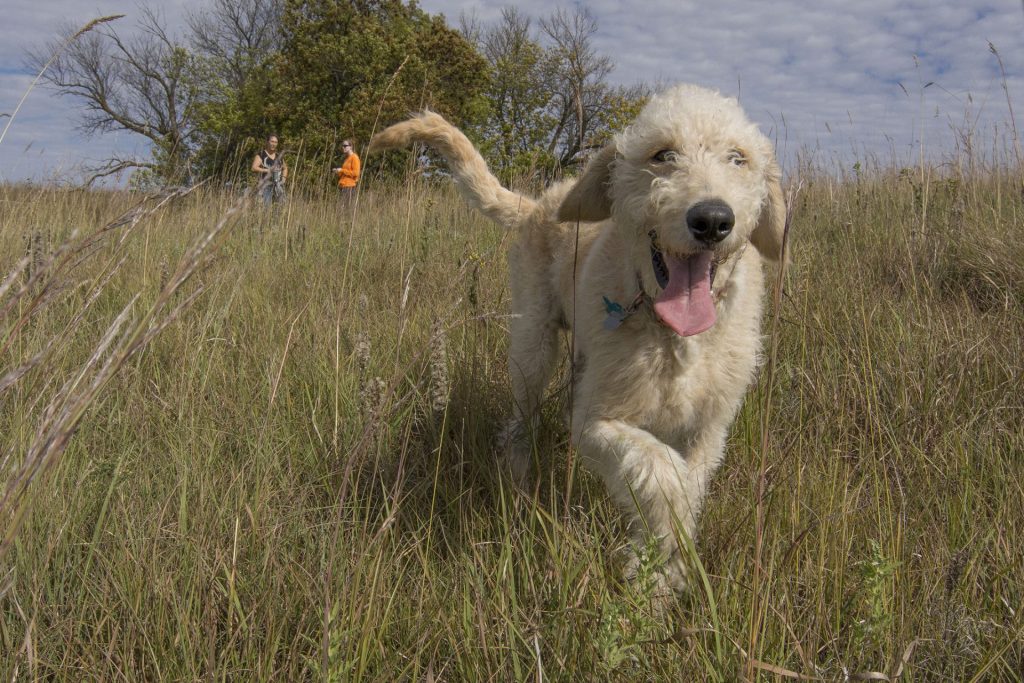
Despite spending much of my work week in prairies, I still love heading to the Helzer Family Prairie during my evenings or weekends. It’s a great place for photography, or just to explore and see how things are changing. I’ve learned a tremendous amount about prairie ecology simply by watching plant and animal communities respond to both weather patterns and our management practices.
I’m eternally grateful to all my relatives who have helped keep our prairie in the family, and for the trust they’ve placed in me as caretaker of the site. I’m also proud to live in a state where the vast majority of land is owned and managed by families like ours.
Each of us has the incredible privilege and responsibility to maintain the health of the land in our care, and to ensure that the generations following us will honor the same obligations. It’s a sacred responsibility that I cherish, and I hope it’s one that my kids will as well. ■
Prairie Management
The top priority for our family prairie is to optimize habitat for wildlife, pollinators and plant diversity. We graze between 25 and 30 cow/calf pairs on about 110 acres of pasture each year, between mid-April and late September. Our grazing strategies are designed to create a “shifting mosaic” of habitat patches that represent the full spectrum of grassland vegetation structure. Each patch has years when it is intensively grazed for most of a season, but also years of little or no grazing to compensate.
The current technique we’re using is something I call the “open gate grazing rotation system.” It’s about as uncomplicated as a grazing system can be, but seems to cover all of our objectives. Our pasture is split into four big paddocks and a couple smaller ones. After quickly running cattle through several of those pastures in the spring to knock back smooth brome, bluegrass and sweetclover, we put the cattle into one of the bigger paddocks for a month or so, or until they’ve grazed most of the vegetation short. Then, we open the gate to the next paddock. However, instead of closing the gate behind the cattle, we leave the gate open, allowing access to both paddocks. As the season progresses, anytime the cattle start running low on forage, we just open another gate – always leaving at least one paddock ungrazed each year.
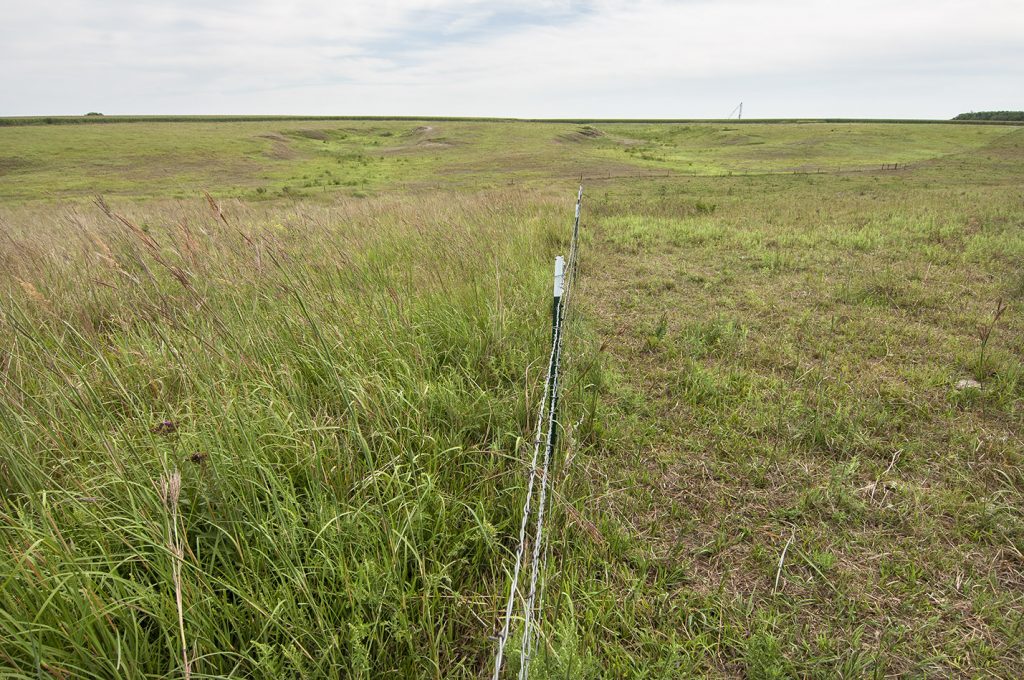
Leaving gates open allows the cattle to keep grazing the paddocks they started on earlier in the season, helping to provide valuable short-stature habitat. The initial paddock gets grazed hard all season long, suppressing the vigor of dominant grasses. In the following year, that paddock is left ungrazed and goes through a year of weedy recovery, providing excellent brood-rearing habitat for birds and abundant food and cover for many other wildlife and insect species.
While we’re still experimenting with open-gate technique, I like what I’ve seen so far. Each year, the first paddock grazed gets the kind of season-long intensive grazing we want and then rests for the following season and part of the next. Other paddocks receive intermediate levels of grazing intensity and duration, resulting in a variety of habitat structure for wildlife and growing conditions for plants. The stocking rate of cattle is the same as what we’d use in any other grazing rotation, so I’m optimizing our income. However, instead of trying to graze the entire pasture evenly, I’m “overutilizing” some parts of the pasture and “underutilizing” others. Because the “overutilized” areas get plenty of time to recover, we’re not degrading the long-term health of our grasses, but are sustaining high plant diversity and good wildlife numbers.
The post Our Family Prairie appeared first on Nebraskaland Magazine.
















